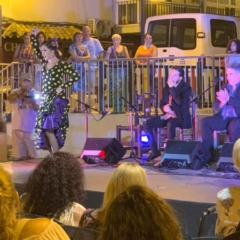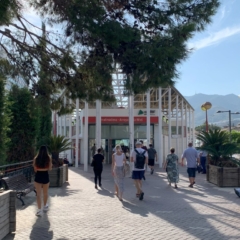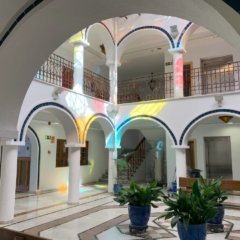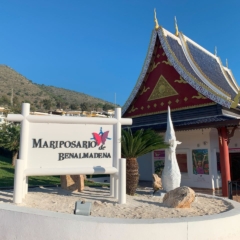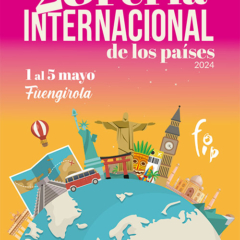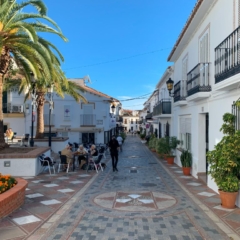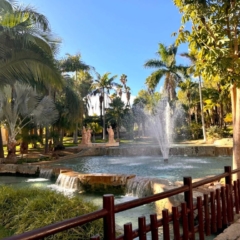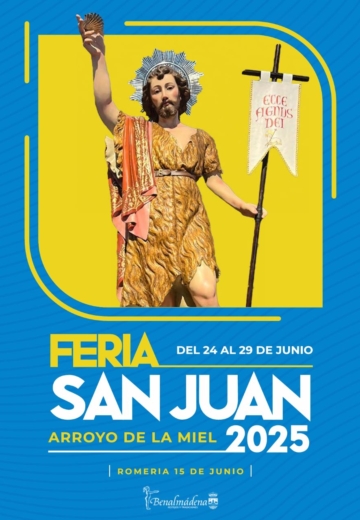Casa de la Cultura de Benalmádena – Roman villas, olive oil & Mare Nostrum
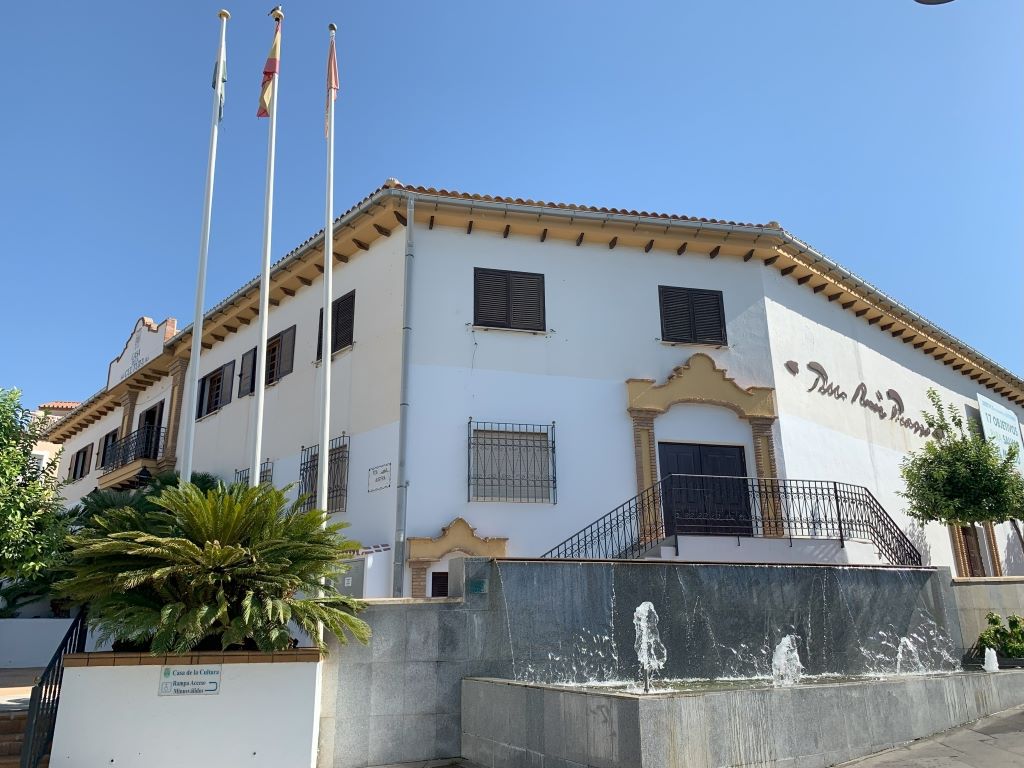
On my morning walk today I stopped by the Casa de la Cultura de Benalmádena (Benalmadena’s culture house), a place that had grabbed my attention from the beginning of my times here, but that also made me a little shy – it is such an imposing building right in the city center, and with that name! I thought I’d have to buy tickets months ahead. Plus, the door seemed to be always closed…
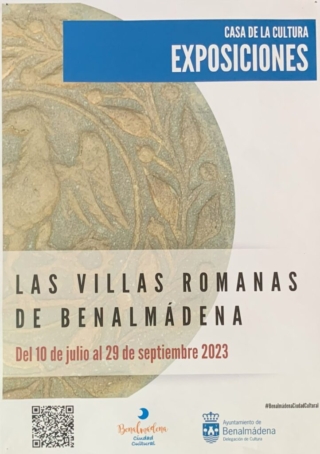
It was their announcement of an exposition about the old Roman villas, featuring the production of olive oil in the ancient times, that made me grow the courage to face the building – I’m passionate about olive oil like some people are about wine, and I’m always interested in learning more about it.
Casa de la Cultura de Benalmádena
First and foremost, I was very wrong in my assessment of the building. The issue is that the real door is on the side, facing a little square, and not the main street, Avenida de la Constitución. I think that door behind the fountain is their emergency exit… Also, they are open every weekday, and entrance is free!
Below, a little video showing their entrance and the little square, called Plaza Austria. Casa de la Cultura is open from Monday to Fridays, from 9h to 13h and, during the winter, also from 16h to 22h.
The Roman Villas of Benalmadena exposition is going on till 29/09/23. The exhibition displays the architecture, remnants, and life of the Romans in Benalmadena through a series of large pictures, some of which are shown on this post.
Roman Villas: historical context
Benalmadena had not only one, but two Roman Villas! The exposition in the Casa de la Cultura features a series of posters describing (in Spanish only, sorry) these villas and how life was organized there. It starts with a superb and succinct context of the occupation of the area, shown below, which superposes the previous occupations with the present one, for orientation.
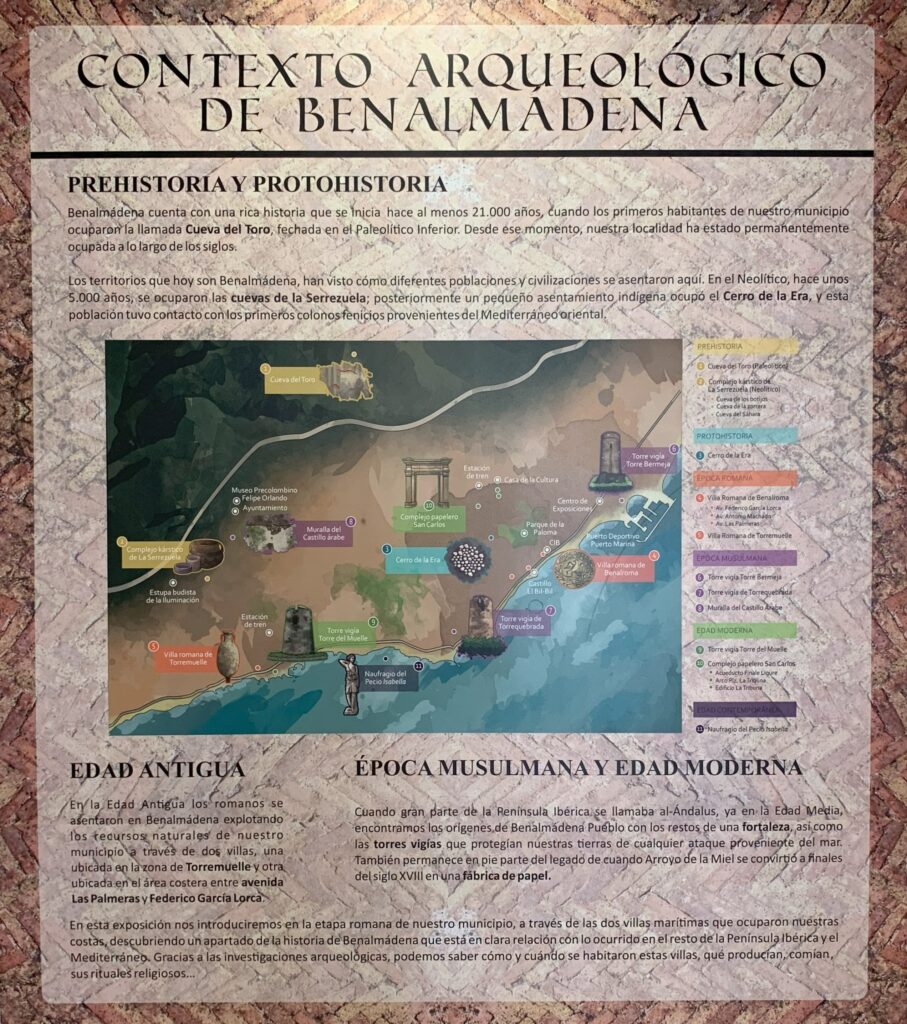
In yellow, the two first and prehistorical occupations of Benalmadena, dating back staggering 21 thousand of years! According to the exposition, our dear Bena has been permanently occupied ever since – I understand why. Up to this day, whoever comes wants to stay!
In blue, the indigenous occupation during the protohistoric period, near what today is Golf Torrequebrada. After them, during the ancient times, the romans arrived and occupied two coastal areas, building the two Roman Villas in which the exposition focuses: one, called Benalroma, located between the current Avenida de las Palmeras and Avenida Federico García Lorca; the other in nowadays Torremuelle. Their settlements are marked in orange.
In purple, the occupation of the muslim era; remnants of which are the watchtowers of Torrequebrada (Torrequebrada, by the way, translates as broken tower) and Torre Bermeja – this last one on the Marina. Also, the walls of the Arab castle, which you may have not noticed, but take a look here:
This is the muro (wall) of the famous Jardines del Muro (gardens of the wall) in Benalmadena Pueblo.
Settlements of modern times are in green, featuring the Torre del Muelle in – you guessed it – nowadays Torremuelle, and a paper factory in what is today Arroyo de la Miel. To close it, the map shows in dark purple the location of the 1855 shipwreck of the Pecio Isabella.
Roman villas architecture
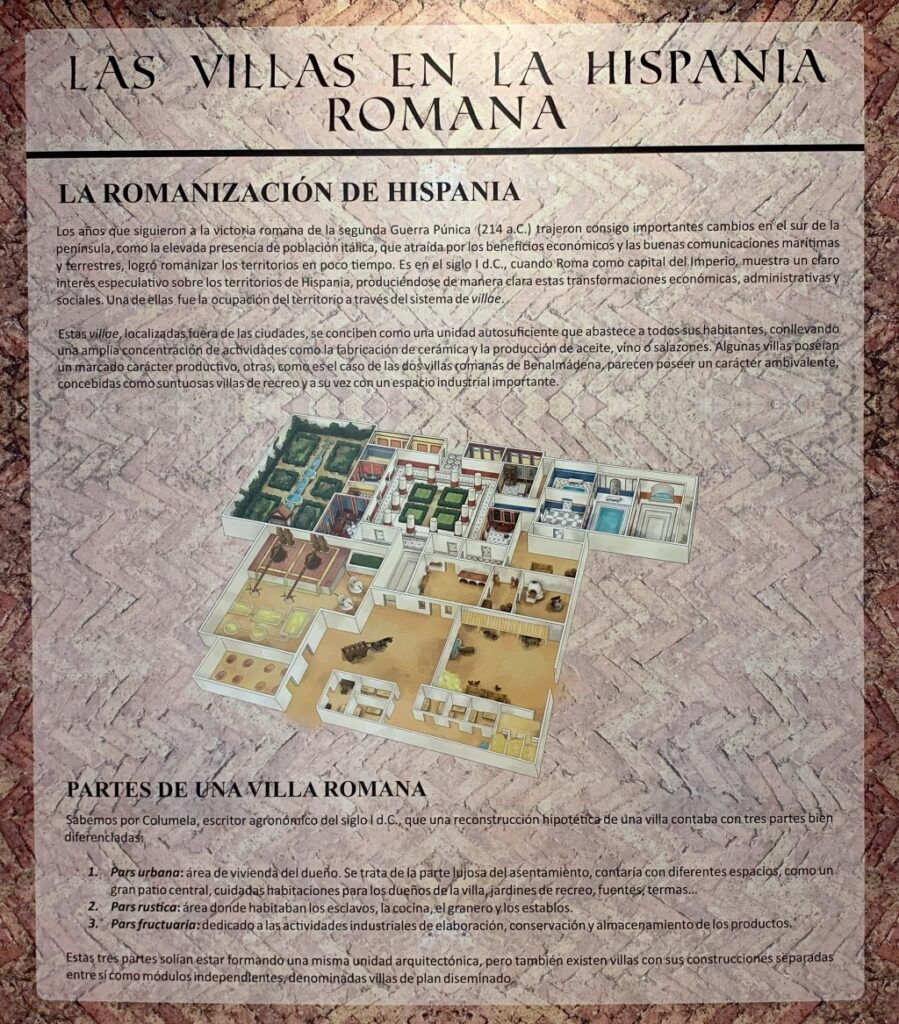
According to the exhibition, in the first century d.C. the Roman empire’s interest in their already occupied areas in Spain increased. One of the ways in which it is shown is through the construction of Villas, such as the one depicted above.
These villas were self-sufficient units that concentrated a vast number of activities, which could include pottery, olive oil production or fish conservation (by salting). Some Roman villas were oriented to production, but the ones found in Benalmadena have an ambivalent character; they seem to have been conceived both as production site and recreational space for their rich owners. Benalmadena was already a good vacation spot back then!
A Roman village used to have three parts: a Pars urbana, the luxurious area where the owner and his family would live, with a yard with gardens, fountains or baths; a Pars rustica, where the slaves, kitchen, granary, barn and animals would stay; and a Pars fructuaria, the production area, where the goods of the villa would be produced, stored and preserved.
In the exhibition, they have pictures of the remnants found around Benalmadena 😉
Liquid gold – Olive oil production in Benalmadena’s Roman times
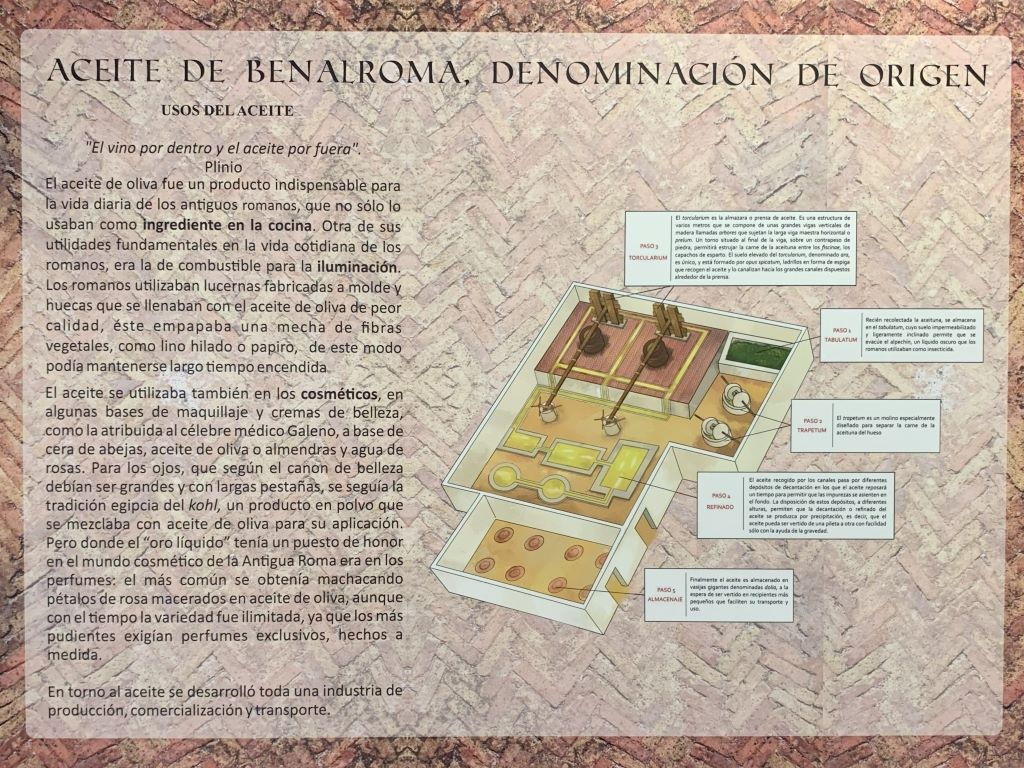
The picture above tells that olive oil was an indispensable product for Romans’ daily lives. They didn’t use it only for cooking; the oil was also fuel for lamps and base for cosmetics and fragrances. On top of that, whole industries revolved around olive oil, to provide production, commercialization and transportation of the goods.
The picture shows the part of the villa dedicated to extracting olive oil. The production started from the green area, where the olives were gathered; a dark colored liquid was released in this stage, which was used as insecticide. From there, olives were moved to the trapetum, where the seeds were removed. The pitted olives were then compressed in the round part of the torcularium; the oil that was obtained would run though the specially designed floor in chevron pattern shown above (and as a background for every picture displayed in the exhibition) straight into the canals, to be deposited in the tanks.
The oil would stay in the first tank for a while, to let the impurities sink and also to separate the oil from the water. Just the oil that reached a certain height of the tank could pass to the next, as the tanks were connected at different heights. There once again gravity would do the filtration, and so on through the tanks. This way, the oil that reached the last tank had been naturally filtered several times and was of the best quality; the lowest quality of oil, in the bottom of the tanks, would be used for the lamps. The different qualities of oil were stored in large ceramic vases for further distribution in smaller containers.
The process for making olive oil today still relates to what it was during roman times; the torcularium has been substituted by a hydraulic press and the filtration process now is done by a centrifuge, saving time. There are different procedures in different parts of the world, and in some areas, it is still much closer to what it was in the past.
Hungry much? Pick your favorite olive oil and match it to the perfect tomato; add some basil if available and yum! You got the best juicy, delicious, and healthy snack.
Mare Nostrum
At least since roman times, the sea has played an important role in the lives of those who inhabited Benalmadena. In the past, the Mare Nostrum (Our Sea), the Roman name for the Mediterranean Sea, had an important role in the expansion of the civilization, occupation of lands and, in our area, in providing fish and salt – an important means of food conservation – to the habitants of the empire.
The fishes were caught either with nets or fishhooks, and excavations on former roman coastal territories often find those utensils. The fishes were then salted and preserved in amphoras for transportation to other parts of the territory. Mackerel and Sardinia were the top two kinds of fish consumed.
Besides salted fish and fish sauce, another product that came from the sea and was abundantly consumed was oysters. The shells were used for jewelry or for construction, while the pearls were, even back then, already a luxury product.
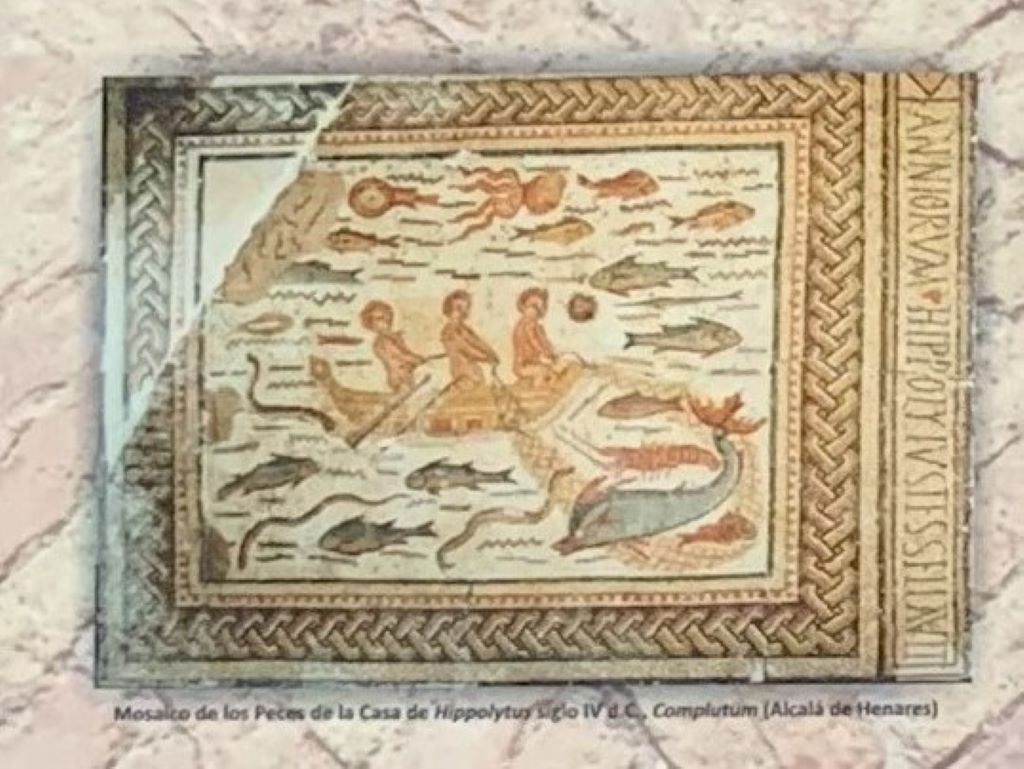
Do you feel like knowing more? Grab your Spanish speaking neighbors and take them to the exhibition up to September 29. Also, check the culture area of the Ayuntamiento de Benalmadena for more interesting cultural events in our city and our post dedicated to culture in Benalmadena!
